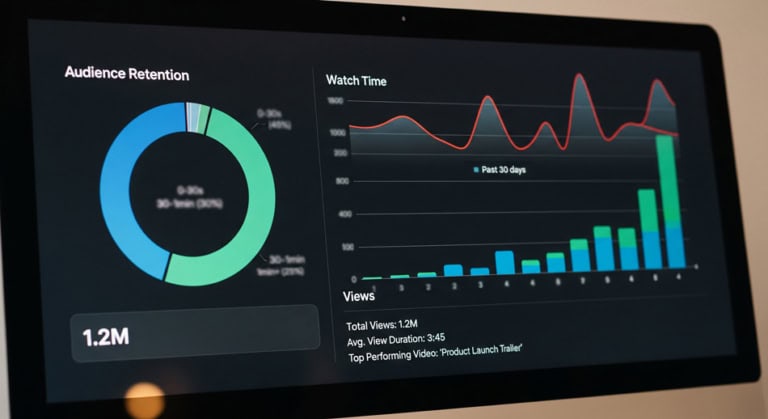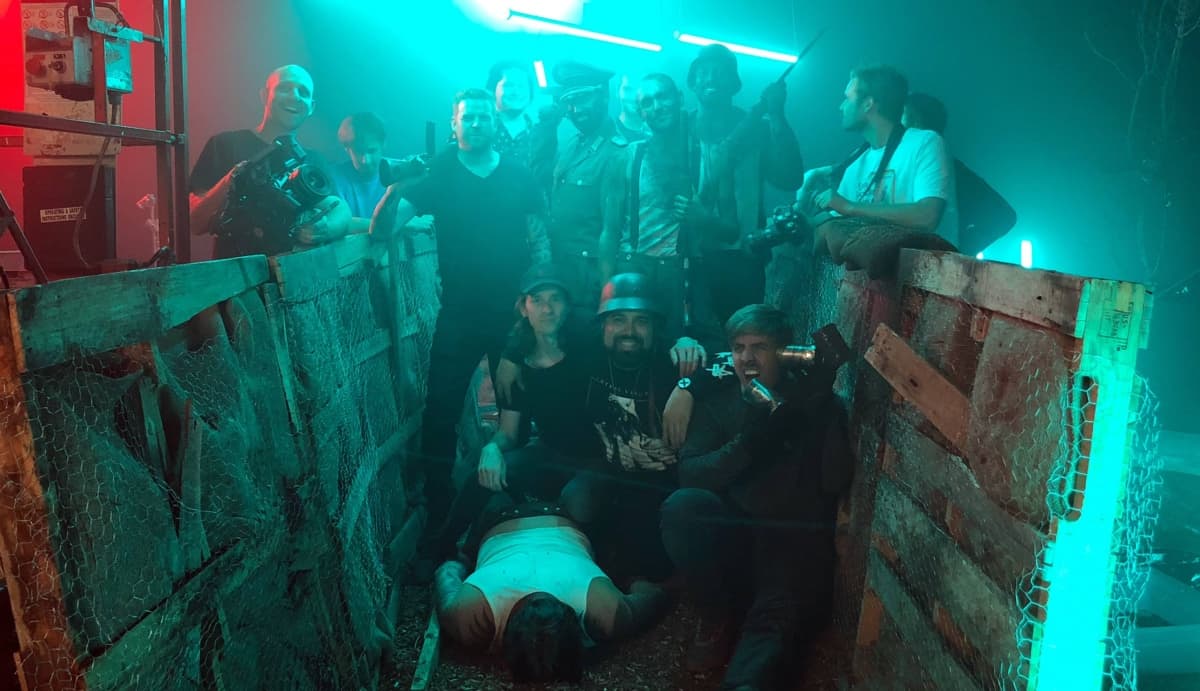
Director Michael Zumaya built a strong network and reputation within a subset of the Southern California music and film scene over the past decade. He honed his craft working for Tony Hawk’s 900 Films while growing his own production company, Muted Widows.
Shortly after an eight-day hospital stay due to COVID complications, he left his comfort zone and moved to Austin in April 2021.
“I was like, I need to experience something else,” he said. “It was terrifying leaving (my family) and all my friends.”
Growing up outside San Diego, Zumaya called himself an “outlier,” referring to his taste in music, painting his nails, and interest in Star Trek and Star Wars.
He bonded with his dad over movies, and that passion led to him taking a series of film & TV production classes in high school. During that time in 2008, Zumaya co-produced a documentary about Prop 8, a California ballot initiative intended to ban same-sex marriage.
The film won “Best In Show” at a local competition, earning Zumaya’s school a license to Final Cut Pro and a Sony MiniDV HDV camera.
“That was kind of like my first bug, like maybe I should kind of keep at this,” he said.
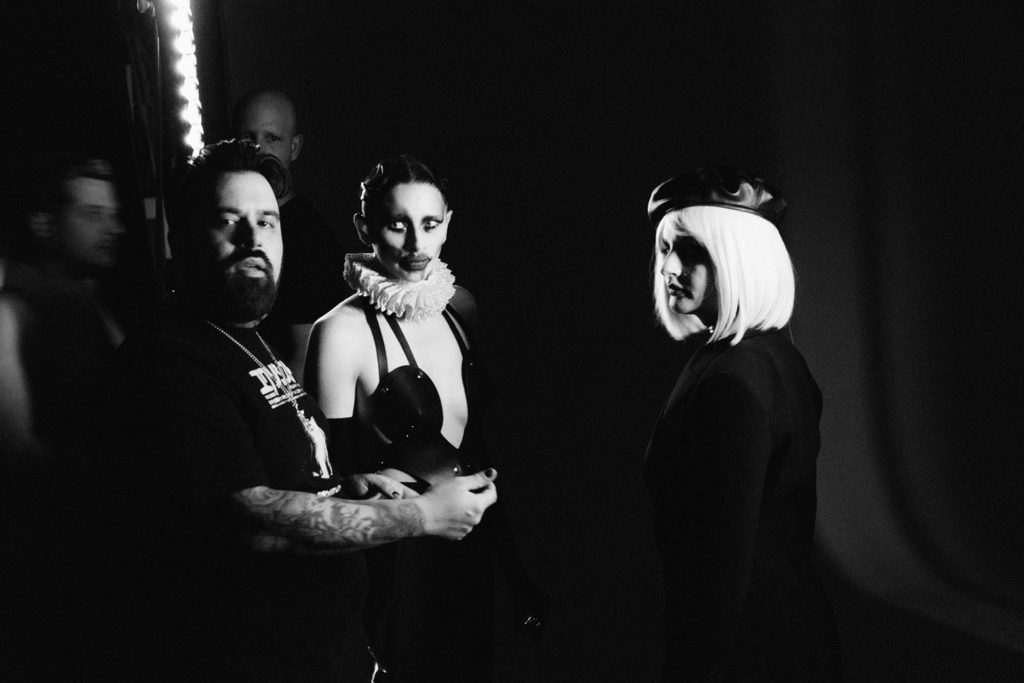
Carving A Niche In Music Videos
Equipped with a Canon 7D DSLR camera that he bought using the proceeds from winning a separate film contest, Zumaya began earning a name for himself by the time he reached junior college.
He also grew as an editor while interning for Tony Hawk’s production company.
“I was with them for like 3.5 years, and it was really, really rad,” he said. “I started off doing PA work and like logging and capturing footage, but then I started editing and I became the editor on three of the (YouTube) shows.”
In the meantime, music gigs kept coming. When aggrotech band Combichrist needed help with a video, Zumaya filled in as a grip and in the art department working alongside cinematographer Gavin Fisher.
That caught the attention of Zumaya’s former classmate, Michael E. Linn, who was filming a music video near San Diego. In 2012, they collaborated on several projects under the name, “Widow Brothers,” a nod to their respective widow’s peaks.
Their videos for bands like Secrets, Hands Like Houses, and I The Mighty generated hundreds of thousands of YouTube views despite shoestring budgets and requesting favors to gather materials.
“I had a friend who was dating a dentist, and she gave me 200 human teeth to use for the ‘Speak To Me’ video, because it was all supposed to be like a dream sequence,” Zumaya said. “The moral of all that is just ask, because you never know who is gonna say yes, or who’s gonna be down to give you something like that. It was crazy.”
Over time, Widow Brothers caught the attention of bands outside of San Diego County and began working with Motionless In White and Carnifex.
Zumaya credits people like special effects artist Clint Carney, gaffers Mike Sheehy and Gordon Yould, and DP Ryan Hogue for raising the bar on his projects. Later, he worked extensively with renowned makeup artists like Blake Armstrong and Leah Carmichael.
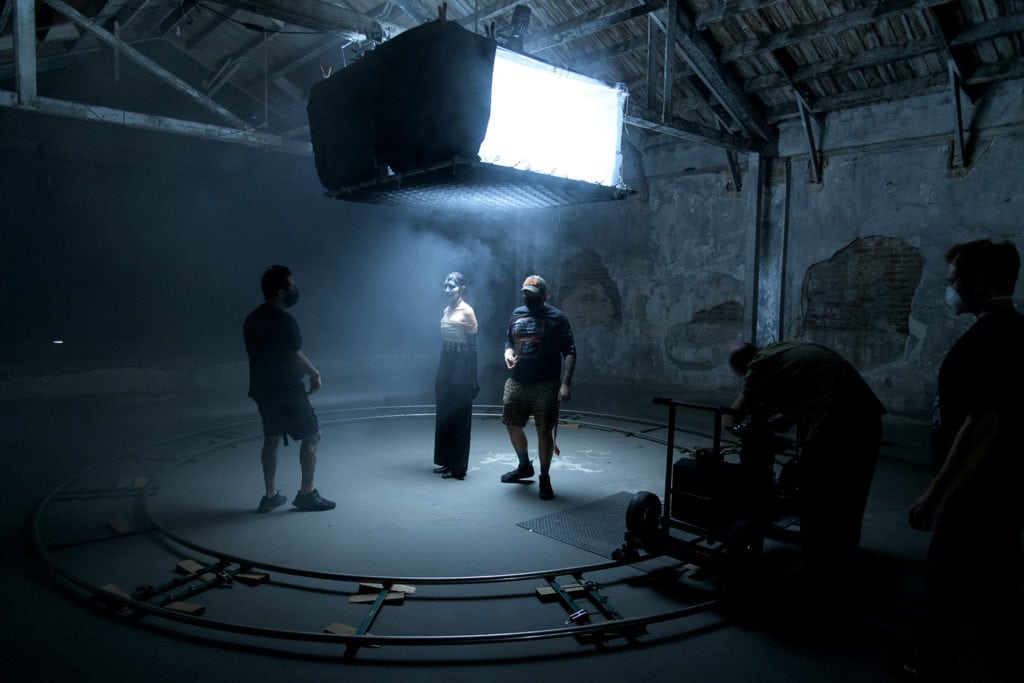
The Birth Of Muted Widows
Widow Brothers became Muted Widows after Zumaya received a random Instagram message from photographer Nedda Afsari (aka Muted Fawn).
“She goes, ‘Hey, I think your work is stellar. That’s cool that you do video. I’m starting to branch into that,’” Zumaya said. “And her photography is crazy. I was just looking at it, and I’m like, this is some of the coolest work I’ve ever seen.”
They had a chance encounter at a goth club in L.A., and Afsari asked Zumaya to edit a video she filmed for Jennie Vee, the bass guitarist for Eagles of Death Metal.
Soon after, they combined as Muted Widows with Zumaya serving primarily as producer and director, Linn focusing on directing, script supervision, and editing, and Afsari being the creative director and director. They all contribute to pre-production and often switch roles depending on the project.
The partnership thrived thanks to intimate, brooding, and futuristic music videos for bands like Boy Harsher, Drab Majesty, Ceremony, and TR/ST.
“I always get dreamy, dark, and sensual,” Zumaya says of Muted Widows’ artistic style. “I was always attracted to things that you don’t see often.”
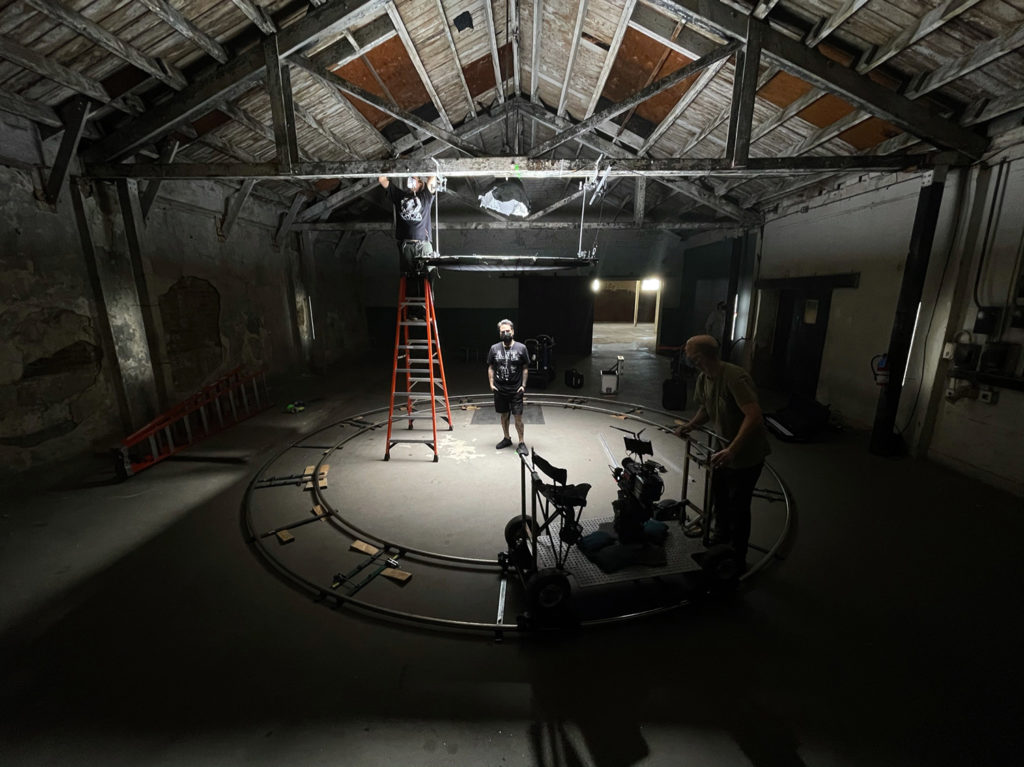
Filming Music Videos Based On Atmosphere
When Muted Widows works with bands, they focus on visual references during pre-production to capture the right mood. Zumaya likes to combine different images from Afsari’s photo archive to build a theme. He also takes photos of the location and adds emojis to create a semblance of a storyboard that he shares with the artists and crew.
On set, his style is less prescriptive and more instinctual.
“I really try not be like, ‘Be sad,’ that’s a terrible direction, it doesn’t do anything,” he said. “I operate so much more on what it feels like.
“I’ll take an image that I like – like parts of it and almost Frankenstein it. ‘I like the color of this, I like this prop here, I love the framing of this, I love their body position here. But overall, I need it to feel more cold or more dark or more sad.’”
During filming, Zumaya often plays music that matches the tone that he’s trying to capture. For the Carnifex video “Visions of the End,” he blasted “Feurio” by the German experimental band Einstürzende Neubauten to get actors in the right mindset for a scene involving fake dead bodies, a mouth spreader, and a cage.
“It’s like nightmare music, but in the context, it’s also weirdly sensual,” Zumaya said. “It’s like, we were no longer filming, and we just became witnesses to what was happening.”
Even though Zumaya is separated by geography from his Muted Widows partners, they’re still actively working on projects together.
To grow his roots in Austin, though, Zumaya is looking to collaborate with other local creatives and artists. He’s even exploring genres beyond metal and electronic, and he wants to expand into narrative and commercial work.
“I would love, love, love to do pop and rap so bad,” he said.
Click here to get in touch with Zumaya. To follow Muted Widows, visit their site and Instagram at @mutedwidows.

